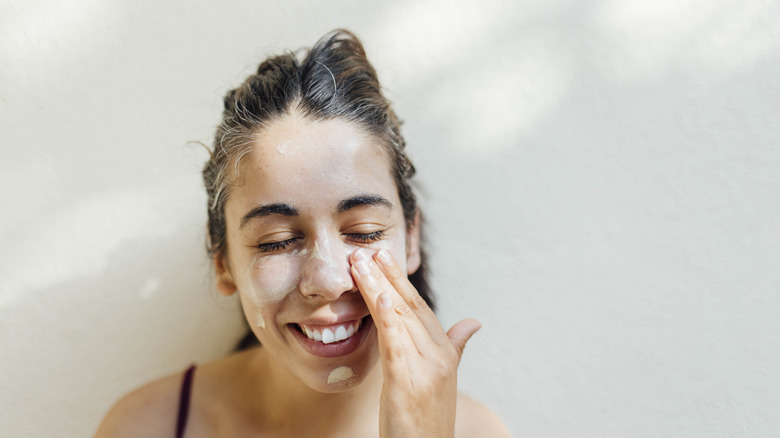What Is Lactobionic Acid? The Exfoliant, Explained
If you're looking for a skincare ingredient that's as benign as it is effective, lactobionic acid might just be your answer. The name may sound dramatic and scientific, but this naturally-derived ingredient comes to your skin with a kinder approach. It's certainly a multitasker; an exfoliant that smooths, hydrates, and protects even the most delicate visages.
Dermatologically speaking, lactobionic acid is polyhydroxy acid (a PHA), which works on the skin's surface to gently loosen dead skin cells. Unlike better known BHAs and AHAs (beta-hydroxy acids and alpha-hydroxy acids, respectively) — which infiltrate the skin in a deeper way — PHAs have a different, broader chemical structure that minimizes aggravation to reveal a brighter and more even complexion. A study published in the Journal of Cosmetic Dermatology found that lactiobionic acid lowers skin surface pH (making it more acidic) without causing external irritation — great news for those with skin that's prone to sensitivity.
It has other merits, too. Lactobionic acid is classified as a humectant, which means it works wonders for hydration. Additionally, its antioxidizing action functions as a shield against free radicals (the pesky molecules that exacerbate aging), so it preserves your skin's glow and overall health. What's more, it strengthens the skin barrier, helping anyone dealing with environmental stressors or conditions like rosacea.
How is lactobionic acid best used?
Dermatologists praise lactobionic acid for its versatility, as it can benefit almost any skin type. It particularly suits sensitive skin, serving as a suitable alternative for those who find AHAs or BHAs too harsh. Lactobionic acid can also be safely used alongside retinol in a routine, and in some cases, even strengthen its effects.
As board-certified dermatologist and cosmetic surgeon Karyn Grossman advised Byrdie, gradual introduction into your routine yields the best results. She recommends "using it two to three times a week, especially if you are new to exfoliants." Increasing it over time allows the skin to adjust with the least aggravation. Be sure to use along with a good moisturizer to secure its hydration and keep the skin soft. Finally, pairing this antioxidant with an SPF will protect your skin from UV damage.
Research published in Cosmetic Dermatology found that the average user can expect appearance-enhancing results in just 12 weeks of using lactobionic acid. With all its benefits, it's difficult to believe this might ingredient has been slept on for so long, but now it might be time for it to take its well-deserved spot in the skincare limelight. That being said, caution and a dermatologist consultation is suggested for those with a lactose or milk allergy, since the ingredient is derived from milk sugars.

